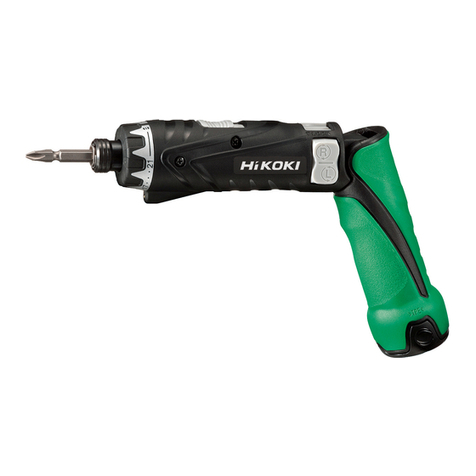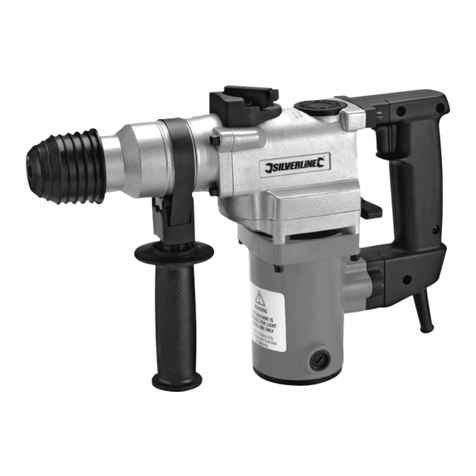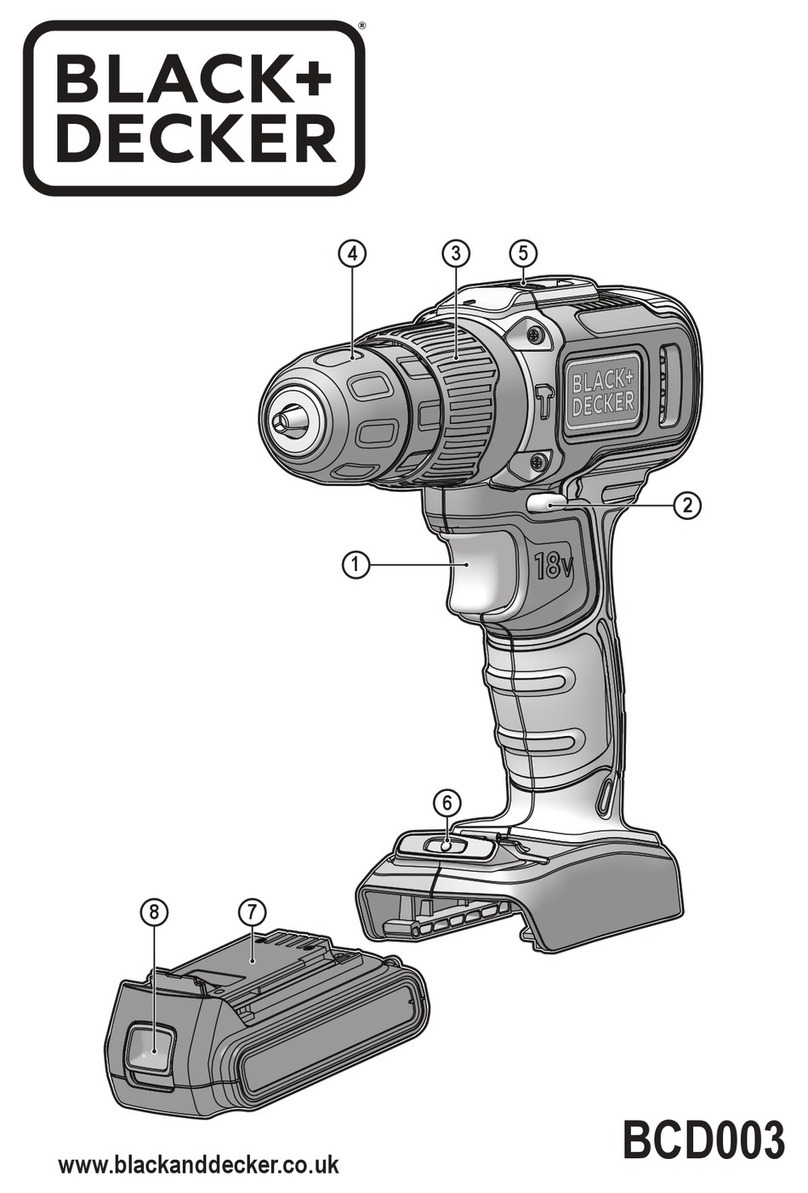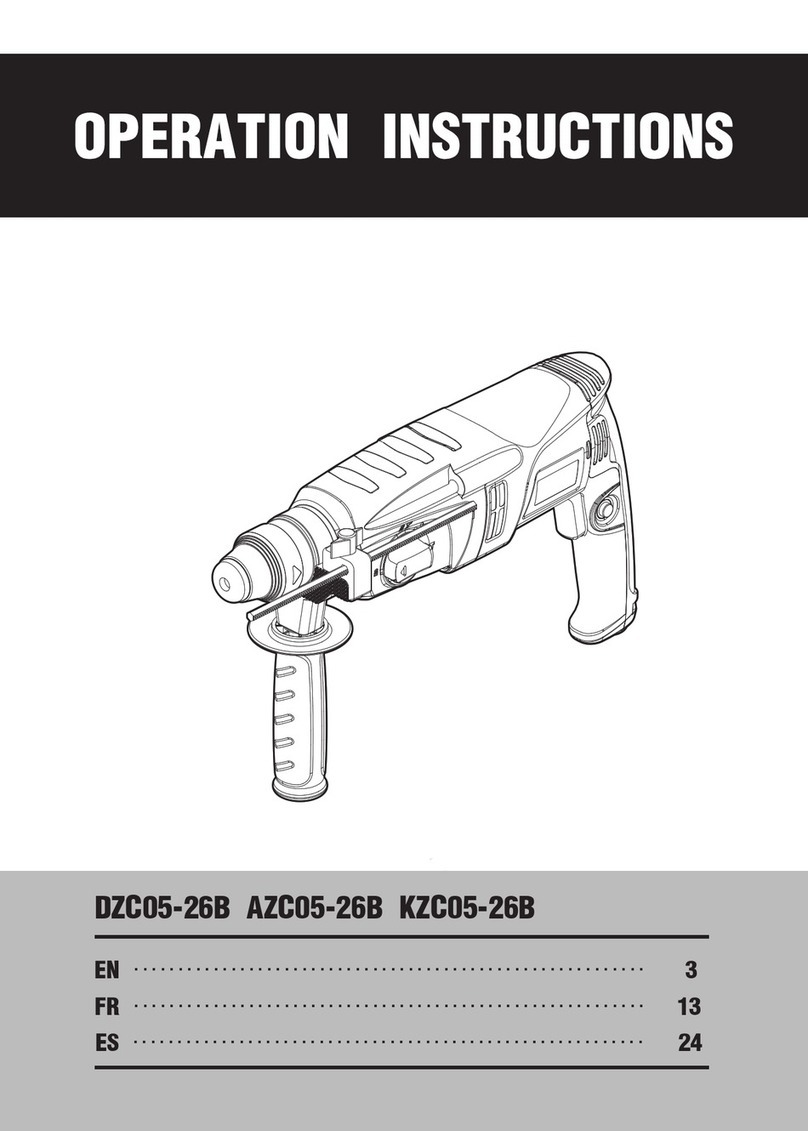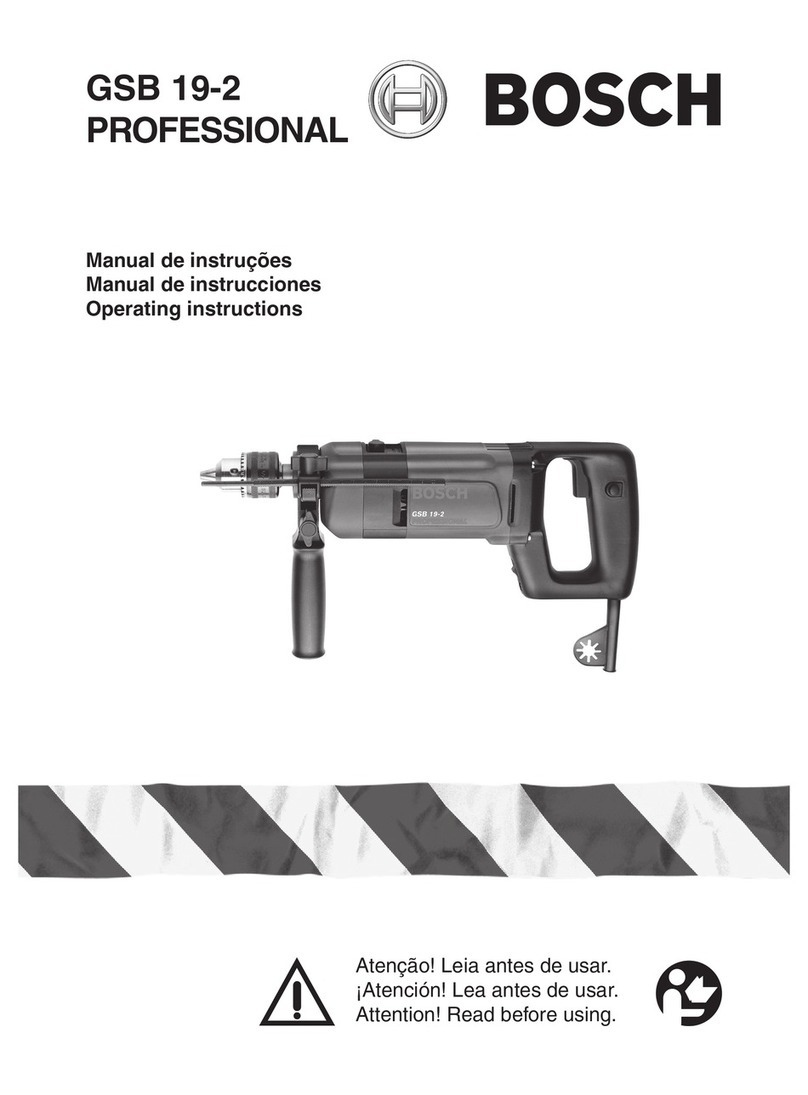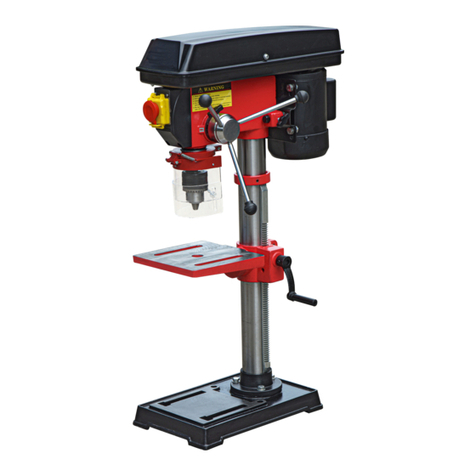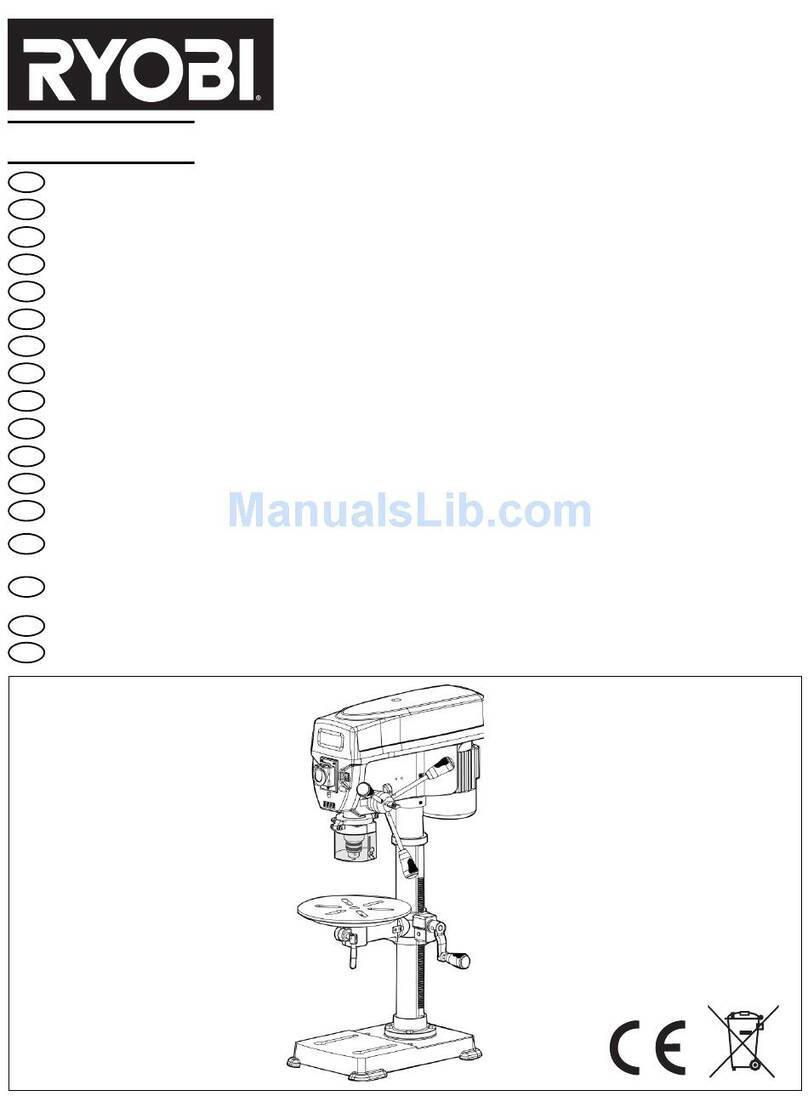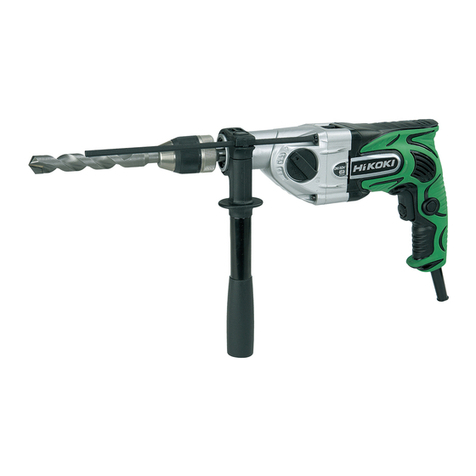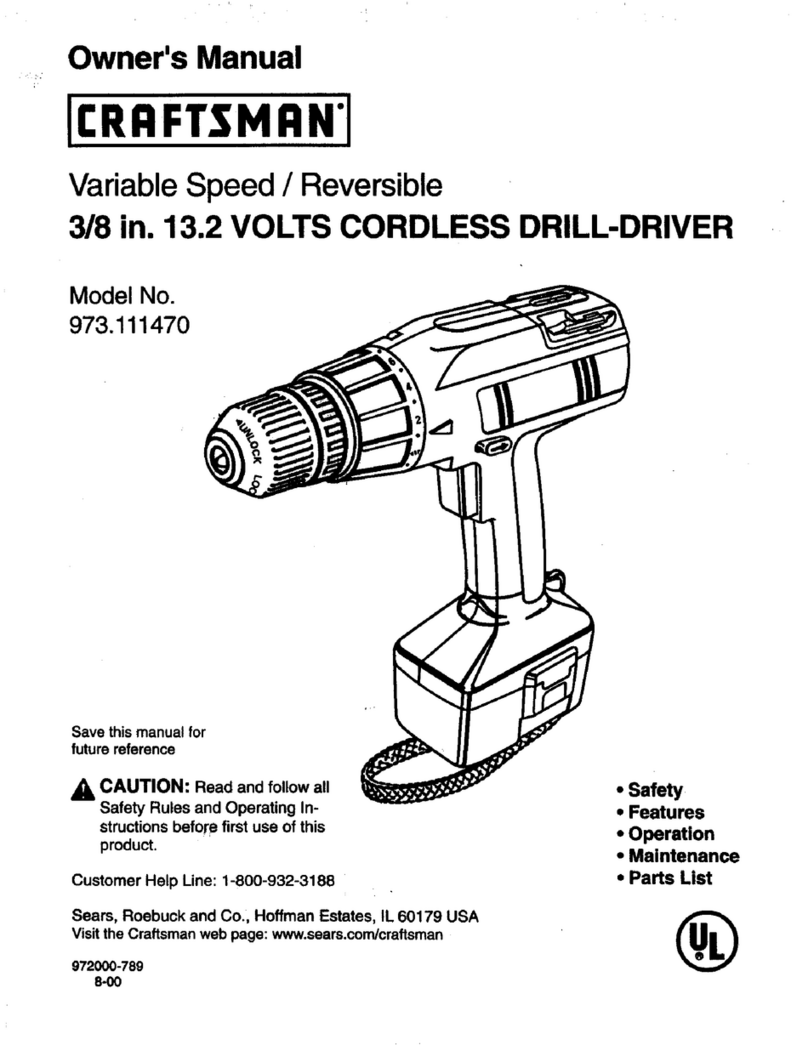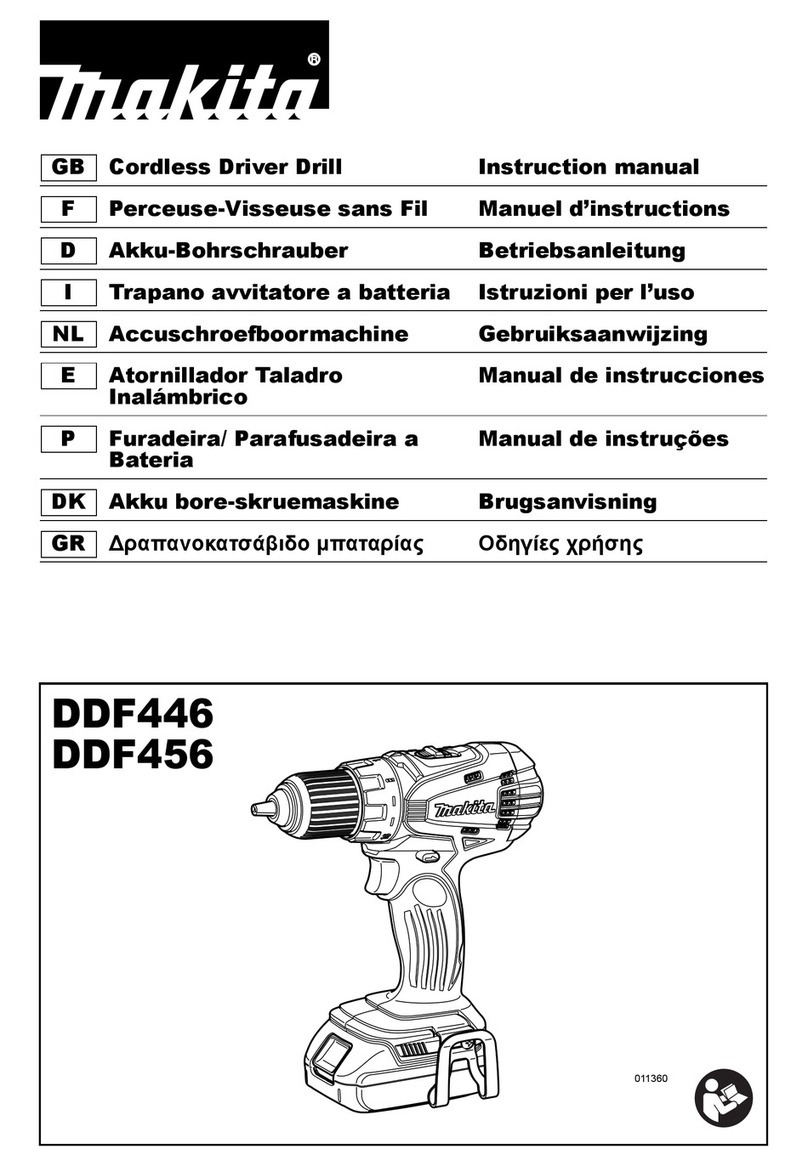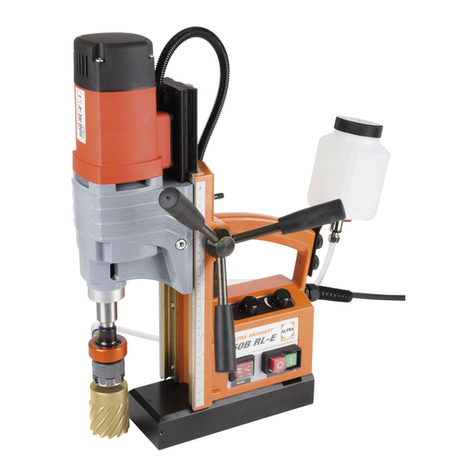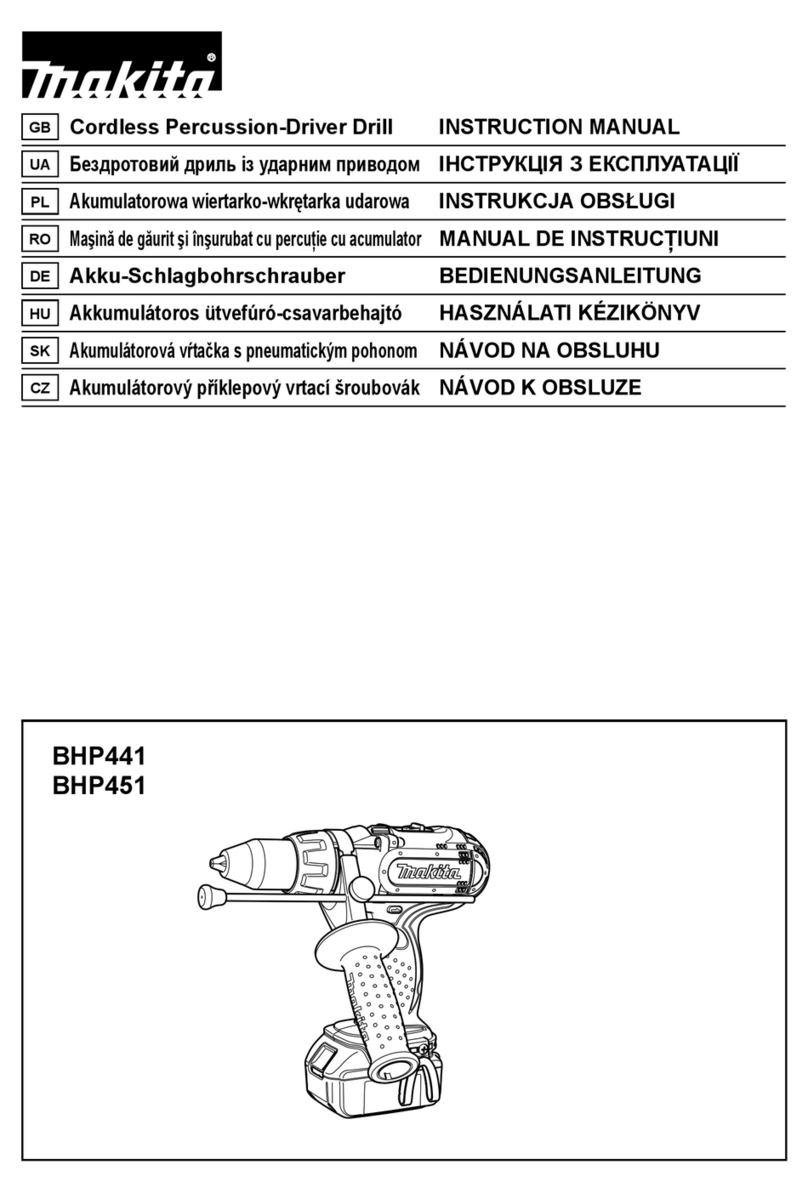Technoplus multiflex 80280 User manual

multiflex
OPERATING INSTRUCTIONS
technoplus Verarbeitungstechnik GmbH As of:
12.12.2007
6923 Lauterach / AUSTRIA Version:
1.0
Retain for future reference!

2 Version 1.0

Version 1.0 3
Identification data
Identification data manufacturer
technoplus Verarbeitungstechnik GmbH
Lerchenauerstraße 69
6923 Lauterach / AUSTRIA
Telephone: +43 (0) 5574 76178-0
Fax: +43 (0) 5574 76178-2
Internet: www.technoplus.eu
Identification data marketing company
Grass GmbH
Grass Platz 1
6973 Höchst / AUSTRIA
Telephone: +43 (0) 5578 701-0
Fax: +43 (0) 5578 701-59
Email: info@grass.at
Internet: www.grass.at
Identification data product
Product: Drilling and inserting machine
Type : multiflex
Item number: 80280
Serial number: …………
Year of manufacture: …………
Legal information relating to operating instructions
These operating instructions and the information contained therein have been compiled
with all due care and attention. However, technoplus Verarbeitungstechnik GmbH
accepts no liability for printing errors, other forms of error, or any damage resulting from
such.
technoplus Verarbeitungstechnik GmbH reserves the right to undertake changes to
their products which serve to facilitate their technical advancement. Such amendments
may not necessarily be documented individually in each case.
The copyright to these documents remains the sole property of the manufacturer. All
manner of reproduction, including excerpts, is only permitted with the permission of the
manufacturer. The only exception to this is where the copying of instructions is required
for the operation of the product.
© Copyright technoplus Verarbeitungstechnik GmbH 2007. All rights reserved.

4 Version 1.0
Table of Contents
1.
General user information 6
1.1. Purpose of the document ................................................................................... 6
1.2. Positional information in the documentation....................................................... 6
1.3. Figures used ...................................................................................................... 7
1.4. Symbols used..................................................................................................... 8
2.
Basic safety instructions 9
2.1. General safety instructions................................................................................. 9
2.2. Obligations of the operating company.............................................................. 10
2.3. Obligations of the personnel ............................................................................ 10
2.4. Proper use ....................................................................................................... 10
2.5. Reasonably foreseeable misuse ...................................................................... 10
2.6. Safety equipment ............................................................................................. 11
2.7. Personal protective equipment......................................................................... 11
2.8. Hazards and safety measures ......................................................................... 12
2.9. Residual risk according to EN ISO 12100 parts 1+2 ........................................ 13
3.
Product information 14
3.1. Overview of machine with component descriptions.......................................... 14
3.2. Technical Data ................................................................................................. 15
3.3. Machine identification....................................................................................... 17
4.
Permissible tools 18
4.1. Vertical boring mill............................................................................................ 18
4.2. Horizontal boring mill........................................................................................ 18
5.
Permissible workpieces 19
5.1. Permissible materials ....................................................................................... 19
5.2. Permissible workpiece dimensions .................................................................. 19
6.
Unpacking and scope of delivery 20
6.1. Unpacking ........................................................................................................ 20
6.2. Scope of delivery.............................................................................................. 20
7.
Transport, Storage and Erection 21
7.1. Transport and storage conditions..................................................................... 21
7.2. Space requirements and ambient conditions ................................................... 21
7.3. Requirements for the foundations .................................................................... 21
7.4. Erection at final site.......................................................................................... 22
8.
Installation and commissioning 23
8.1. Pneumatic connection...................................................................................... 23
8.2. Electrical connection ........................................................................................ 23
8.3. Dust extraction connection............................................................................... 23

Version 1.0 5
9.
Working with the machine 24
9.1. Clamping the drill bit into the quick-change chuck........................................... 24
9.2. Mounting the quick-change chuck on the boring head .................................... 24
9.3. Attaching a table extension.............................................................................. 25
9.4. Mounting the insertion matrices on the insertion frame ................................... 25
10.
Settings on the machine 26
10.1. Setting the vertical bore depth ......................................................................... 26
10.2. Setting the vertical bore spacing...................................................................... 26
10.3. Setting the horizontal bore depth..................................................................... 27
10.4. Setting the horizontal bore height .................................................................... 27
10.5. Adjust the drilling speed................................................................................... 28
11.
Troubleshooting and fault recovery 29
12.
Maintenance 30
12.1. Maintenance schedule..................................................................................... 30
12.2. Cleaning instructions ....................................................................................... 31
13.
Circuit diagrams 32
13.1. Pneumatic Diagram ......................................................................................... 32
13.2. Pneumatic components ................................................................................... 33
13.3. Electrical circuit diagram.................................................................................. 34
13.4. Electrical components...................................................................................... 35
14.
Decommissioning and disposal 36
14.1. Decommissioning ............................................................................................ 36
14.2. Disposal........................................................................................................... 36
15.
Warranty conditions 37
16.
Miscellaneous 39
16.1. Declaration of conformity ................................................................................. 39
16.2. Resale sheet.................................................................................................... 41
16.3. Questionnaire 1 - Reason for purchasing the multifflex ................................... 43
16.4. Questionnaire 2 - Satisfaction.......................................................................... 45
17.
Personal notes 47

GENERAL USER INFORMATION
Version 1.0 6
1. General user information
1.1. Purpose of the document
These operating instructions serve to describe the operational processes and
maintenance of the machine as well as to provide important information required for
the safe and efficient handling of the machine.
1.2. Positional information in the documentation
All directional and positional information in these operating instructions relate to the
operating position of the user.
Rear side of the machine
L
e
f
t
R
i
g
h
t
Front side of the machine
Operating position of the user

GENERAL USER INFORMATION
Version 1.0 7
1.3. Figures used
Instructions and system reactions
Operating steps that are to be undertaken by operating personnel are depicted as
numbered lists. The order of the steps is to be maintained. The reactions to the
respective operations are marked by means of an arrow. Example:
1. Operation 1
Reaction to operation 1
2. Operation 2
Reaction to operation 2
Lists
Lists that do not have a set order are depicted as lists with dashes. Example:
– Dash 1
– Dash 2
Numbering in figures
Numbering in figures is shown within quotation marks. Example:
”1“
”2“

GENERAL USER INFORMATION
8 Version 1.0
1.4. Symbols used
Important!
The symbols serve the purposes of safety and may not be removed or damaged
under any circumstances. Observe all warning and safety signs attached to the
machine.
Danger! Immediate impending danger which will lead to serious injury
or death.
Warning! Possibly dangerous situation which could lead to serious injury
or death.
Caution! Possibly dangerous situation which could lead to minor injury.
Also warning of property damage.
Important! Potentially damaging situation which could cause either the
product or property in its vicinity to be damaged.
Note! For operational information and other useful information. Not to
be used for dangerous or potentially damaging situations.
Warning signs Risk of injury due to crushing the hands and fingers.
Prohibition signs The machine may only be operated by one person.
Mandatory signs Wear eye protection
Mandatory signs Wear ear protection
Mandatory signs Wear protective gloves
Mandatory signs Wear protective shoes
CE marks
Designates conformity with the valid EU directives which are
applicable to the product and which prescribe a CE
identification.
Note! Observe the operating instructions
Note! Note regarding lowering the drilling unit even with the motor
switched off

BASIC SAFETY INSTRUCTIONS
Version 1.0 9
2. Basic safety instructions
2.1. General safety instructions
– The deployment and application of the drilling and inserting machine may only be
undertaken as described in these operating instructions.
– The operating company of the drilling and inserting machine is responsible for
maintenance of application-related national and international health, work and
safety regulations. In addition, the operating company is obliged to ensure that all
operating personnel have been trained in the operation of the machine.
– Work on the electrical equipment may only be undertaken by authorised specialist
electricians.
– Protect yourself from electric shocks.
– The pneumatic and electrical connection lines are to be laid in an orderly fashion
and are to be protected against damage (e.g. inside cable ducts).
– Before beginning each working day, all safety equipment is to be checked for
completeness and function.
– Only replace damaged parts with original replacement parts!
– The machine is always to be separated from the electrical mains as well as from the
pneumatic compressed air supply for all maintenance, repair and adjustment tasks.
– The electrical master switch must always be set to 0 and the EMERGENCY STOP
button pressed after completion of work, before changing tools, when changing
gears, or for all work in the area of the tools.
– It is to be secured against re-starting by unauthorised persons.
– The permissible tools are described in chapter 4. For your own safety, only use
tools of correspond strength from the manufacturer's supply portfolio.
– Particular care is to be taken with large workpieces which project over the edges of
the machine table. It is necessary to mount a larger rest (accessories - table
extension) or to use additional supports for the workpieces.
– Shavings may not be blown-off, rather, they are to be extracted by means of
suitable equipment.
– Always keep the working area and the machine clean, untidiness and obstructed
working areas increase the risk of injury.
– Only use the machine in clean rooms, do not leave the machine outdoors,
especially never leave it outside in the rain.
– Wear tight-fitting working clothes when working with the machine and use a hairnet
if you have long hair. In addition, the personal protection equipment is to be adhered
to and worn, see chapter 2.7.
– These operating instructions must be available to the operating personnel at all
times.
– Modifications and amendments as well as interfering with the electrical systems of
the drilling and inserting machine can lead to serious injury and are forbidden.
– The machine must always be shut-down immediately in the event of danger by
means of pressing the EMERGENCY STOP button.
– The machine may only be operated by one person.
– It is only permitted to operate the machine when standing in an upright position.
– Machine parts may not be used as props for the body.
– It is not permitted to reach into the running machine. When working, ensure that the
hands are kept out of the working range of the tools and the inserting frame.

BASIC SAFETY INSTRUCTIONS
10 Version 1.0
2.2. Obligations of the operating company
The operating company is obliged to allow only those persons to work on the machine
who:
– are familiar with the basic regulations relating to working safety and accident
prevention,
– have been trained to work with the machine,
– have read these operating instructions and have signed them to confirm that they
have been understood.
The requirements of the EC directive for the usage of tools 89/655/EEC is to be
maintained.
2.3. Obligations of the personnel
Before beginning work, all persons who have been commissioned to work with the
machine are obliged to:
– observe the basic regulations relating to working safety and accident prevention,
– read the safety chapter and the warning information contained in these operating
instructions and to sign to confirm that they have been understood.
Please contact the manufacturer in the event of unresolved queries.
2.4. Proper use
Warning!
The machine is to be used solely in accordance with its proper use and is only to
be operated when in technically perfect working order!
The drilling and inserting machine is intended exclusively for drilling in solid wood or
wood-like materials (wood-based composite materials) and the inserting of fittings.
Only those tools may be used that are expressly detailed in chapter 4 may be used.
– Proper use also includes the following:
– the observance of the operating instructions and safety instructions
– the undertaking of cleaning and maintenance tasks.
2.5. Reasonably foreseeable misuse
Warning!
Dangerous situations can arise in the event of misuse!
All applications that are not specified under "proper use" or applications which exceed
these shall be considered as improper use!
The operator is responsible
– for any damage resulting from such,
– and the manufacturer accepts no liability.
The following misuse is not permissible:
– Drilling and inserting with materials which are not in accordance with the regulations
– Drilling and inserting of workpieces which are not in accordance with the regulations
– Simultaneous usage of the machine by more than one person.

BASIC SAFETY INSTRUCTIONS
Version 1.0 11
2.5.1. Modifications or amendments
Unauthorised modifications or amendments to the machine shall void all manufacturer
liability and guarantee!
For this reason, do not make changes or additions to the machine without first seeking
the agreement and written permission of the manufacturer.
2.5.2. Replacement and wearing parts as well as auxiliary materials
The use of replacement and wearing parts from third-party manufacturers can be
dangerous. Only use original parts or parts that have been released for use by the
manufacturer. The manufacturer accepts no liability for damage caused by the usage
of replacement and wearing parts that have not been released by the manufacturer.
2.6. Safety equipment
Important!
Safety equipment, warning signs, etc., serve the purposes of safety and may not
be removed or damaged or deactivated under any circumstances.
– Lockable electrical master switch to secure against unauthorised starting and to
switch the machine off when setting up and adjusting.
– Lockable pneumatic EMERGENCY STOP switch to secure against unauthorised
starting and to switch the machine off when setting up and adjusting.
– Compressed air filter pressure-reducing-valve to prevent mechanical overloading of
the machine, see Pneumatic diagram chapter 13.1
– Thermal overload protection for the electromotor, see Electrical circuit diagram
chapter 13.3
– Controllable back-pressure valve, directly on the master cylinder prevents the
machine from lowering in the event of pressure loss, the valve is only opened when
the start button is pressed, see Pneumatic diagram chapter 13.1
– Motors only run when the start button is pressed. After the start button has been
released, the motors start up after a delay. The delay duration can be adjusted in
the electrical switching cabinet.
– The motor does not run during the insertion process.
– Integrated dust extraction system to protect the operating personnel from fine
particulate matter.
– Various protective covers to protect against contact with the drill
2.7. Personal protective equipment
The operator must provide the following protective equipment.
Wear protective gloves
Wear protective shoes
Wear eye protection
Wear ear protection

BASIC SAFETY INSTRUCTIONS
12 Version 1.0
2.8. Hazards and safety measures
Hazards and adverse effects can occur during the application of the machine,
– which can represent a risk to life and limb for the user or third-parties,
– for the machine itself, or
– to other property and ancillary materials.
In this case, the manufacturer accepts no liability.
The basis for safe handling and fault-free operation of this machine is the knowledge
of the safety and operating instructions contained within this documentation.
Hazard Safety measure
Release tool Chuck with clamping screw
Tool - breakage
only branded products from the manufacturer's
supply portfolio. The personal protection equipment
have to be worn
Tool - contact All tools behind a transparent cover
Tool - machine contact Safety drilling depth stop
Workpiece ejection Workpiece stops
Advance mechanism No automatic advancing movements
Workpiece clamping
mechanism Icon on hold-down device (= insertion frame)
Risk of impact Non-existent due to slow lifting motion
Drives Direct drive in completely closed transmission
housing
Tool unit
Advance for lifting movement via buttons with collar
and without latching; maintenance of safety
margins according to EN 294 in relation to risk
Control, unexpected tool start
Control, unexpected lift
activation
Electrical control with PE converter, button with
collar and without latching
Control, tool-start during
insertion Query of insertion frame with pneumatic valve
Electricity Equipment according to EN 60204 part 1, VDE
0100 and IEC 384
Noise The personal protection equipment have to be worn
Dust Dust extraction system

BASIC SAFETY INSTRUCTIONS
Version 1.0 13
2.9. Residual risk according to EN ISO 12100 parts 1+2
Important!
The machine has been built according to the current state-of-the-art and
recognised safety-relevant regulations.
However, danger to life and limb for the user or third-parties or adverse effects
to the machine or other property can occur during its operation.
Residual risks comprise:
– Caution, even when the electrical master switch is turned off, the machine will
move in the event that the start button is pressed, insofar as it is supplied with
compressed air.
– In the event of operation by unqualified personnel
– In the event of operation without the required safety and protective equipment
– in the event of improper tooling or improper tool attachment
– In the event of processing large workpieces without additional workpiece supports
– In the event of drilling, insertion or clamping movements of machine parts for the
2nd hand of the operating personnel
– In the event of additional persons in the working area
– In the event of interfering with the machine if it has not been properly secured
– In the event of failure to observe the regulations for proper use
– In the event of control system failure

PRODUCT INFORMATION
14 Version 1.0
3. Product information
3.1. Overview of machine with component descriptions
”1“ Machine table
”2“ Base frames with guidance columns for horizontal movement
”3“ Base frames with guidance columns for vertical movement
”4“ Vertical boring mill
”5“ Horizontal boring mill
”6“ Machine foundation (=accessory)
”7“ Electrical switching cabinet
”8“ Pneumatic console
”9“ Vertical boring transmission

PRODUCT INFORMATION
Version 1.0 15
3.2. Technical Data
Main dimensions of the machine
Machine table width 1,000 mm
Machine table depth at 20mm boring gap 500 mm
Machine table height with foundation (=accessory) 950 mm
Machine table height without foundation 200 mm
Machine table overall height with foundation 1,650 mm
Machine table overall height without foundation 910 mm
Machine overall depth 1,010 mm
Setting ranges for the machine
Vertical boring mill
Drill lengths - maximum possible length 57 mm
Drill diameter - maximum permissible drill diameter at pot spindle 35 mm
Drill diameter - maximum permissible drill diameter on all other
spindles 15 mm
Bore row - greatest possible spacing 200 mm
Bore row - smallest possible spacing 0 mm
Furniture hinges - greatest possible pot spacing (central boring) 50 mm
Furniture hinges - smallest possible pot spacing (central boring) 9 mm
Horizontal boring mill
Drill lengths - maximum possible length 150 mm
Drill bit diameter - maximum permissible drill bit diameter 16 mm
Boring height - maximum possible boring height 5 mm
Boring height - minimum possible boring height 40 mm
Bore depth - maximum bore depth Approx.120mm
Overall weight of the machine
Overall weight of the machine vertical / horizontal 14/03 with foundation Approx.220kg
Overall weight of the machine vertical / horizontal 14/03 without
foundation Approx.160kg
Ambient conditions
Temperature in operation +10 to +30 °C
Temperature in storage -10 to +40 °C
Humidity in operation or storage, not condensation! 10 to 80 %

PRODUCT INFORMATION
16 Version 1.0
Electrical connection
Supply voltage according to type plate ..... V
Frequency according to type plate ….. Hz
Installed load for 3-phase motors 1.8 kW
Rating of the supply is to correspond with local regulations, however, minimum 1.5mm²
fused supply with max. 1.5x nominal current according to type plate, max. 10 A.
H07RN-F5G1.5 or equivalent
Pneumatic connection
Dust, water and oil-free compressed air min. 5.5 bar
Max. working pressure max. 6 bar
Max. permissible pressure in supply line max. 10 bar
Compressed air consumption per bore stroke 6 bar Approx. 1.2 l
Compressed air consumption per bore stroke, suction performancefor compressor Approx. 7.5 l
Pressing force at 0.6 MPa (6bar) Approx. 3,000 N
Dust extraction connection
The machine must be connected to an extraction system in accordance with the
interface description. The connection lines are to be designed to be flame-resistant. If it
is necessary to connect the machine to the extraction plant electrically, the
manufacture offers a volumetric flow rate monitor as optional equipment, which can be
connected to the interface shown on the electrical circuit diagram, chapter 4-007.
The dust and shavings collection elements of the machine are to be designed in such
a way as that the value remains safely below the technical guideline concentration limit
value for wood dust. (Connection to a plant according to the interface description, test
protocols by an independent institution available).
Thread diameter for dust extraction vertical bore head Ø 80 mm
Thread diameter for dust extraction horizontal bore head Ø 80 mm
Thread diameter for dust extraction machine foundation Ø 80 mm
Required extraction performance per connection Approx. 360 m³/h
Mean air speed 20 m/sec
Static negative pressure vertical bore head 1500 Pa
Static negative pressure horizontal bore head 500 Pa
Static negative pressure machine foundation 500 Pa

PRODUCT INFORMATION
Version 1.0 17
Noise emission values
According to DIN EN ISO 11202 supplemented by CEN -TC 142, the
workplace emission value L
pA
amounts to:
idle running .......... dB(A)
Working noise 84.5 dB(A)
According to EN ISO 3746 supplemented by CEN -TC 142, the
sound power level L
WA
amounts to:
Idle running ...........dB(A)
Working noise 94.7 dB(A)
The measurement uncertainty constant K amounts to 4 dB(A).
The following supplements specified by CEN - TC142 in order to achieve an accuracy
class better than 3 dB were taken into consideration:
– The environmental corrective factors K
2A
and K
3A
amount to ≤4 dB.
– The difference between the foreign noise sound pressure level and the noise sound
pressure level at all measuring points is ≥6 dB.
– K
3A
is calculated according to appendix A, DIN EN ISO 11204.
– A rectangular enveloping measurement surface with 9 measuring points of
1.0 m from the reference surface is used.
Under consideration of ISO 7960 sections 0 to 4, the machine-specific conditions of
measurement were as follows:
Drill bit: 1xconcealedhinge drill bit
d=35mm; t=13mm n=2750 min
-1
2x dowel drill bits d= 8mm; t=13mm n=2750 min
-1
Workpiece: Uncoated chipboard
Microphone position: 1m distance form the centre of the bore axis at a height of 1.5m.
Note
The values given here are emission values and may not simultaneously represent safe
working area values. As there is no correlation between emission values and working
area values, these cannot be reliably used in order to determine whether or not
additional precautions are required. Factors which could affect the current working
area values include the duration of the influence, the characteristics of the working
space, other sources of noise, the number of machines and other neighbouring
influences. The reliable working area values can also vary from one country to another.
However, this information should enable the operator to make a better estimation of
the potential hazards and risks.
3.3. Machine identification
The machine is equipped with a type plate which details the following:
– machine type
– machine number
– year of manufacture
– weight
– the required compressed air.

PERMISSIBLE TOOLS
18 Version 1.0
4. Permissible tools
Warning!
Hazards for both the machine and its users can occur in the event that
impermissible tools are used!
The operator is responsible
– for any damage resulting from such,
– and the manufacturer accepts no liability.
4.1. Vertical boring mill
Only commercially-available hard metal or HSS drill bits may be used with dimensions
as given in the following table. We recommend only using tools of correspond
strength from the manufacturer's supply portfolio.
– Body diameter max. 10 mm
– Overall length of the drill bit max. 57 mm
– Drill bit diameter drive spindle max. Ø 35 mm
– Drill bit diameter residual spindles max. Ø 16 mm
4.2. Horizontal boring mill
Only commercially-available hard metal or HSS drill bits may be used with dimensions
as given in the following table. We recommend only using tools of correspond
strength from the manufacturer's supply portfolio.
– Body diameter max. 10 mm
– Overall length of the drill bit max. 100 mm
– Drill bit diameter drive spindle max. Ø 19 mm
– Drill bit diameter residual spindles max. Ø 16 mm

PERMISSIBLE WORKPIECES
Version 1.0 19
5. Permissible workpieces
Warning!
Hazards for both the machine and its users can occur in the event that
impermissible workpieces are used!
The operator is responsible
– for any damage resulting from such,
– and the manufacturer accepts no liability.
5.1. Permissible materials
Only workpieces made from
– wood (solid wood) or
– wood-like materials (wood-based composite materials) may be processed.
Other materials may not be processed.
5.2. Permissible workpiece dimensions
The workpieces must be laid stably and securely on the machine table, without the
need for the operator to hold onto the workpieces in order to prevent them from falling
down. This unconstrained positioning (without being held by the user) is a requirement
for the safe operation of the machine and must be ensured by means of the user.
– The maximum workpiece thickness is 40 mm.
– If the workpieces are larger than 300 x 300 mm, then they must be positioned on
bolsters placed next to the machine such as supports or similar devices.
The manufacturer offers table and guide extensions as optional accessories for this
purpose.

UNPACKING AND SCOPE OF DELIVERY
20 Version 1.0
6. Unpacking and scope of delivery
6.1. Unpacking
When unpacking the drilling and inserting machine, the paperboard packaging should
be removed in the upward direction. The machine body is protected against corrosion
by means of sprayed oil.
The sprayed oil can be left on the machine in order to protect against corrosion.
After unpacking, the machine is to be checked for possible damage. Damage is to be
reported immediately to the haulage company and the supplier, both by telephone and
in writing.
6.2. Scope of delivery
The scope of delivery, especially the optional equipment, must be checked against the
delivery notes for completeness immediately after unpacking.
Any incorrect parts are to be reported to the supplier immediately.
The basic equipment comprises:
– 14 Spindle gear drive with chuck (without drill bit)
– Insertion frame to mount the insertion matrices
– 2 Connections for dust extraction system
– 2 mounted lifting eye bolts in order to be able to lift the machine.
– Operating tools
– Operating Instructions
Table of contents

